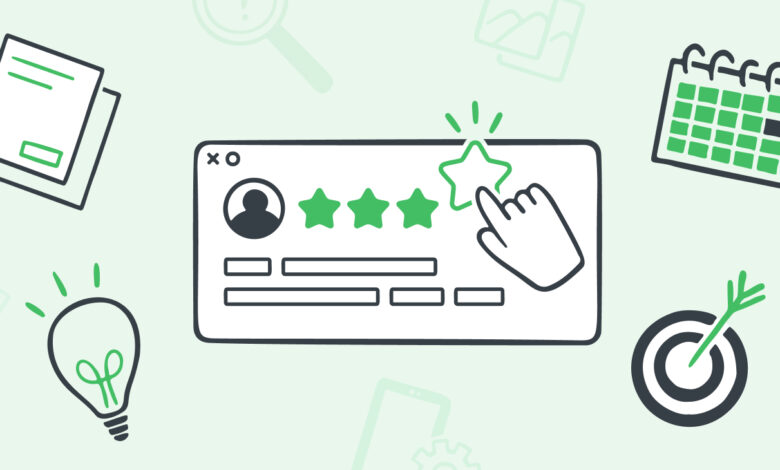How to Collect Actionable Website Feedback from Your Visitors

Collecting website feedback is one of the most effective ways to understand how your visitors experience your site and where improvements can be made. By gathering input directly from users, you can identify pain points, optimize your design, and ultimately boost conversions. Whether you’re seeking to improve your website’s usability, increase engagement, or reduce bounce rates, actionable feedback can be a game-changer.
In this blog, we’ll explore the best methods for collecting website feedback, share some website feedback examples, and show you how to turn those insights into tangible improvements for your site.
Why Website Feedback Matters
Before diving into how to collect feedback, let’s first understand why it’s essential. Collecting feedback from visitors can give you a direct line into the minds of your users. It helps you understand:
- User Experience (UX) Issues: Is your website easy to navigate? Are visitors encountering obstacles or frustrations?
- Content Gaps: Are users able to find the information they need quickly? Are they leaving because they didn’t find the answers they were looking for?
- Conversion Barriers: Why aren’t visitors completing desired actions like making a purchase or filling out a form? Could your calls-to-action (CTAs) be more compelling?
- Brand Perception: What do users think about your brand, products, or services based on their website experience?
By collecting actionable feedback, you gain valuable insights into how users interact with your site and what improvements could lead to increased engagement, conversions, and customer satisfaction.
Different Methods to Collect Website Feedback
There are several ways to gather feedback from your website visitors. Below, we’ll walk through the most effective methods, with a focus on ensuring the feedback you collect is actionable.
On-Site Surveys
On-site surveys are one of the easiest and most direct ways to gather feedback from visitors. These can be triggered at different points in the user journey—either when they complete an action or when they show intent to leave.
Best Practices:
- Keep it Short: A simple 1-3 question survey is ideal for gathering insights without overwhelming your visitors. Make sure the questions are clear and concise.
- Ask the Right Questions: Focus on specific aspects of the website experience. For example:
- “What brought you to our site today?”
- “Was it easy to find the information you needed?”
- “How satisfied were you with your experience?”
- Use a Rating System: A Likert scale (1-5 or 1-7) helps quantify responses and makes it easier to track feedback trends over time.
Why This Works: On-site surveys provide real-time feedback directly from the source—your visitors. They’re quick to fill out and can be strategically placed to capture the right data at the right time.
Exit Intent Popups
Exit intent popups are triggered when a visitor is about to leave your website. This is an opportune moment to ask for feedback, as the visitor has likely already decided not to engage further, so you need to capture their attention quickly.
Best Practices:
- Ask Simple Questions: Focus on why they are leaving. For example:
- “What made you leave today?”
- “Was there anything preventing you from completing your purchase?”
- Offer an Incentive: To encourage participation, consider offering a discount, free resource, or entry into a giveaway for completing the feedback form.
- Keep It Quick: Don’t ask for too much information. A single multiple-choice question or a 1-2 sentence explanation works best.
Why This Works: Exit intent popups capture valuable insights from visitors who are about to leave, giving you a chance to address pain points and identify areas for improvement before they bounce.
User Testing
User testing involves observing real users as they navigate your site and complete specific tasks. This method provides deep, qualitative insights into how visitors interact with your site and where they experience challenges.
Best Practices:
- Recruit a Diverse Group of Testers: Select users who represent your target audience to get relevant feedback.
- Set Clear Goals: Ask testers to complete specific tasks, such as making a purchase, finding a product, or signing up for a newsletter. Observe how they go about achieving these tasks.
- Record Sessions: Use screen-recording software to document user sessions so you can analyze their behavior later.
Why This Works: User testing gives you a real-time, hands-on look at how visitors use your site. By seeing the struggles and frustrations of users in action, you can make informed design decisions.
Live Chat and Chatbots
Live chat and chatbots can serve as an interactive way to collect feedback while helping users in real-time. A chatbot can ask quick questions as users navigate through your website, while live chat allows for more personal, direct conversations.
Best Practices:
- Ask for Feedback After an Interaction: Once a user engages with customer support, ask them how satisfied they were with the assistance they received.
- Use Chatbots for Continuous Feedback: Program chatbots to ask short, targeted questions at key touchpoints, like when users visit product pages or checkout pages.
- Respond Promptly: Ensure that live chat agents are available to address issues or escalate them for further action.
Why This Works: Live chat offers a personal, real-time way to gather feedback. Chatbots, on the other hand, allow for consistent, automated data collection without interrupting the user experience.
Heatmaps and Analytics Tools
Heatmaps and analytics tools help you track how visitors interact with your website. While these aren’t direct feedback methods, they provide valuable insights that can complement user-driven feedback.
Best Practices:
- Heatmaps: Use heatmaps to visualize where visitors are clicking, scrolling, or spending the most time. This helps identify which parts of your website are engaging and which are being ignored.
- Session Recordings: Use tools like Hotjar or Crazy Egg to record user sessions and identify where users get stuck, abandon tasks, or encounter difficulties.
- Behavior Flow Analytics: Analyze user paths and behaviors using tools like Google Analytics. Pay attention to high drop-off points and bottlenecks in the user journey.
Why This Works: Heatmaps and session recordings provide quantitative insights into user behavior, which can uncover UX issues and point to specific areas needing improvement.
Customer Feedback Emails
If you have an established customer base or email list, sending out a feedback request via email can help you collect valuable insights. This method is especially effective if you want feedback from existing customers about their overall experience with your website.
Best Practices:
- Send After a Purchase or Interaction: Ask for feedback after a transaction, sign-up, or customer service interaction to get relevant insights.
- Personalize the Request: Make the feedback request personal and tailored to the user’s recent actions. For example, “We’d love to hear your thoughts on your recent purchase!”
- Keep it Short: Provide a simple, easy-to-answer survey that won’t take more than 5 minutes to complete.
Why This Works: Email feedback allows you to target users who have already engaged with your product or service. It’s a great way to gather insights from loyal customers who can provide valuable perspective on how you can improve.
Analyzing and Actioning Feedback
Once you’ve gathered feedback, the next step is to analyze it and take action. Collecting feedback is only half the battle—turning it into actionable insights is what drives real change.
Key Actions:
- Categorize the Feedback: Group similar feedback together to identify trends. Are users reporting the same issues? Are there repeated complaints about navigation or product offerings?
- Prioritize Issues: Not all feedback will be equally important. Focus on feedback that directly impacts user experience, conversion rates, and overall website goals.
- Communicate with Your Team: Share the feedback with your design, development, and marketing teams to make informed decisions. Everyone in your organization should be aligned with the feedback and the plan to address it.
- Implement Changes: Based on the insights, prioritize changes that will have the most significant impact on your website’s user experience. Whether it’s improving load speed, fixing navigation issues, or enhancing content, take action to implement changes that address user pain points.
Why This Matters: Analyzing feedback and taking swift action is critical to maintaining a positive user experience and improving key metrics like engagement, conversion rates, and retention.
Closing the Loop with Your Users
Finally, it’s essential to close the feedback loop. Once you’ve made improvements based on user feedback, let your visitors know that their input was valuable and that you’ve taken steps to enhance their experience.
Key Actions:
- Thank Users for Their Feedback: Whether through an email, website notification, or follow-up survey, thank users for their time and insights.
- Showcase Improvements: Highlight changes you’ve made based on their suggestions. For example, you could send an email update or display a message on your website saying, “We’ve improved our checkout process based on your feedback!”
- Encourage Continued Feedback: Invite users to share more feedback in the future, showing them that their voice is important in shaping your website’s direction.
Why This Matters: Closing the loop builds trust and shows users that their feedback is taken seriously. It can also encourage repeat feedback, fostering a continuous improvement cycle.
Conclusion
Collecting actionable website feedback is an ongoing process that should be an integral part of your website management strategy. By using a combination of surveys, exit popups, user testing, and analytics tools, you can gather valuable insights into how visitors are interacting with your site. Analyzing and implementing changes based on this feedback will not only improve your website’s user experience but also help you increase conversions, reduce bounce rates, and build lasting customer loyalty.
Your users are the best source of insight. By actively listening to them, you’re paving the way for a website that continually evolves and meets their needs.



